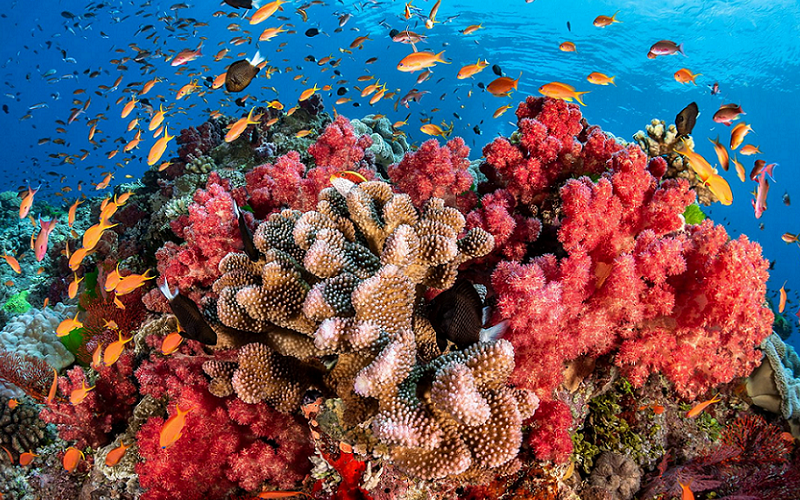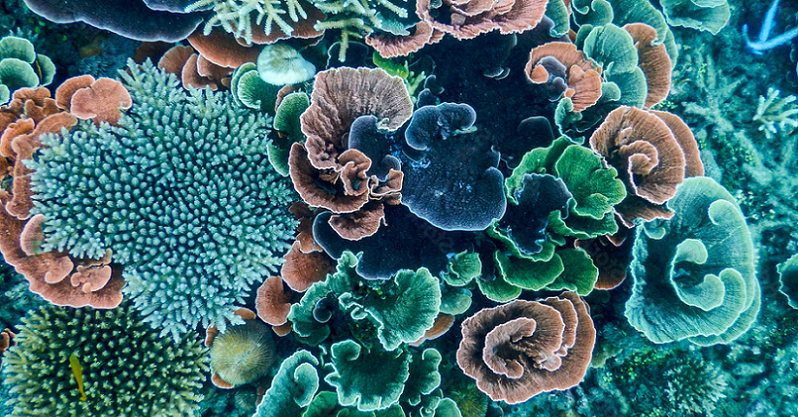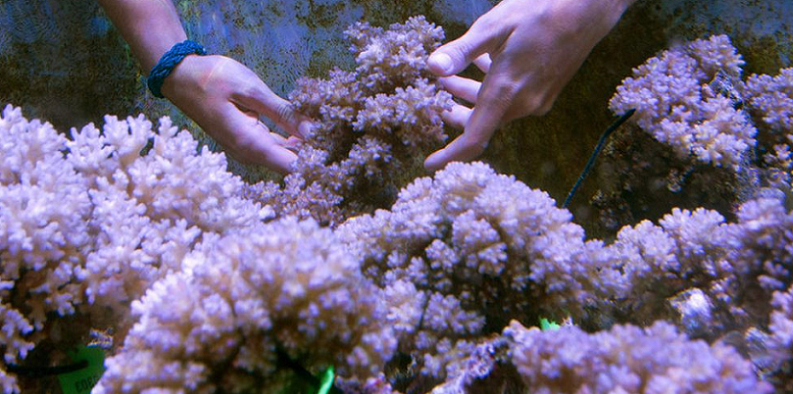
The vast and vibrant underwater cities of coral reefs, teeming with life and swirling with colors, have always captured human imagination. Beyond their aesthetic allure, these complex ecosystems offer a rich tapestry of patterns and interactions that are not only fascinating in their own right but also provide insights into the workings of our own minds. Cognitive flexibility, the brain’s ability to switch between different thought processes in response to diverse stimuli, plays a crucial role in our daily decisions, creativity, and problem-solving. But what could these sprawling marine formations possibly teach us about our own cognitive processes?
Contents
Understanding Coral Reefs: A Deep Dive
Coral reefs, often referred to as the “rainforests of the sea,” are among the most diverse and complex ecosystems on Earth. Before we draw connections between these underwater marvels and our cognitive abilities, it’s essential to delve deep into the intricacies of coral reefs themselves.
Composition and Diversity of Coral Reefs
The sheer diversity of coral reefs is nothing short of astounding. Formed over thousands to millions of years, these structures are primarily built from the calcium carbonate skeletons of countless tiny, living coral polyps.
Different Types of Corals and Their Roles
Coral reefs aren’t just made up of a singular type of coral. They’re a vibrant mix of hard (or stony) corals, which create the framework for the reef, and soft corals, which often resemble plants and trees with their waving fronds. While hard corals provide the essential structure, acting as the high-rise buildings of the reef city, soft corals and sponges create texture and layers, offering habitats and hiding places for an array of marine life.
The Richness of Marine Life Within Coral Reefs
Beyond corals themselves, the reefs are a bustling hub of biodiversity. From the tiniest of cleaner shrimp and vibrant nudibranchs to the majestically gliding manta rays, coral reefs are home to nearly a quarter of all marine species. Each organism, whether it’s the clownfish that dart among anemone tentacles or the parrotfish that graze on algae, plays a unique role in maintaining the balance and health of the reef ecosystem.
Coral Reefs as Living, Evolving Systems
Just like any bustling city or intricate machine, coral reefs are dynamic systems, constantly changing, adapting, and evolving in response to environmental cues and challenges.
How Reefs Adapt to Environmental Changes
Coral reefs are, in many ways, a testament to nature’s adaptability. When faced with challenges such as changing sea temperatures, some corals exhibit a phenomenon known as “bleaching,” where they expel the symbiotic algae living in their tissues. While bleaching is a sign of stress, it’s also an adaptive measure that some corals use to survive in harsher conditions. Additionally, some reef communities shift their composition in response to disturbances, ensuring the ecosystem’s long-term resilience [1].
The Dynamic Interactions Amongst Reef Inhabitants
The interactions within the reef are intricate dances of mutual benefit, competition, and predation. Cleaner fish, for instance, set up “stations” where they rid larger fish of parasites, benefiting from a food source while offering a cleaning service. Simultaneously, the camouflage abilities of creatures like the octopus remind us of the ever-present evolutionary arms race, where being undetected can mean the difference between life and death.

The Human Fascination with Coral Reefs
For millennia, the ethereal beauty and mystery of coral reefs have captivated the human imagination. From ancient seafarers to modern-day marine biologists, these underwater realms have played a pivotal role in our history, culture, and psyche.
Historical Significance and Cultural Importance
The history of human civilization is deeply intertwined with the seas, and coral reefs, in particular, have held significant sway over our ancestors’ lives and tales.
Before the advent of advanced navigation tools, ancient mariners often used coral reefs as landmarks. Their locations were passed down as vital knowledge through generations. Additionally, numerous myths and legends from island cultures revolve around reefs. For instance, some Pacific Islander myths speak of gods and spirits crafting reefs and atolls as abodes or as gifts to humanity [2].
Artistic Representations and Inspirations
The hypnotic beauty of coral reefs, with their riot of colors and patterns, has inspired artists for centuries. From traditional islander art, where reefs are depicted in carvings and tattoos, to contemporary digital media and photography, the visual spectacle of reefs continues to captivate and influence the world of art. They symbolize both the splendor and fragility of nature, often evoking deep emotional responses.
Psychological Impact of Observing Coral Reefs
Beyond history and culture, coral reefs exert a profound psychological impact on us. There’s a certain allure in their tranquil yet vibrant underwater landscapes, which seems to resonate deeply with our inner psyche.
Sensory Stimulation and Cognitive Processing
Observing the diverse array of colors, shapes, and movements within a reef can be a sensory overload. This barrage of stimuli demands our cognitive attention and enhances our observational and pattern-recognition skills. It’s akin to watching a complex ballet, where every dancer has a role, and the beauty lies in discerning the subtleties.
Therapeutic Benefits and Mindfulness Practices
There’s a reason why aquariums, particularly those replicating reef environments, are popular in stress-filled spaces like hospitals and dental offices. Watching the gentle sway of corals and the deliberate movements of reef fish has a calming effect, reducing anxiety and lowering stress levels. This meditative quality has been harnessed in mindfulness practices, where focusing on the serene visuals of coral reefs aids in relaxation and mental clarity [3].

Drawing Parallels: Coral Reefs and Cognitive Flexibility
As we delve deeper into the universe of coral reefs, it becomes evident that there’s more to their allure than just their undeniable beauty. The same intricacies and adaptive mechanisms found within these marine ecosystems echo the complex processes within our minds, especially in relation to cognitive flexibility. Drawing parallels between these two seemingly disparate entities can unveil profound insights into our cognitive architecture and its adaptive nature.
Patterns and Problem-Solving
Patterns are omnipresent in nature, and coral reefs are no exception. The way these patterns form, interact, and evolve offers a captivating mirror to the human brain’s intricate processes of cognition and problem-solving.
Identifying and Deciphering Patterns in Reefs
Reefs, with their myriad species and interactions, present a complex web of patterns. From the symbiotic relationships between corals and algae to the migratory behaviors of reef fish, these patterns are not just random occurrences but result from millennia of evolutionary fine-tuning. Recognizing and understanding these patterns requires keen observation and an analytical mindset – attributes central to human cognitive functions [4].
How This Translates to Enhancing Brain Function
Just as marine biologists decode the intricacies of reef ecosystems, our brains constantly work to identify and decipher patterns in our environment. When we engage with complex scenarios, like understanding a coral reef’s dynamics, we hone our cognitive flexibility. We learn to view problems from multiple angles, pivot our thinking when faced with new information, and develop a holistic understanding of interconnected systems.
Adaptive Mechanisms
The adaptive nature of coral reefs, their resilience in the face of environmental challenges, and their innate ability to evolve offer compelling parallels to the adaptive mechanisms inherent in human cognition [5].
Learning from Reefs’ Response to Stressors
Coral reefs, though fragile, have an uncanny ability to adapt to changing circumstances. As previously mentioned, phenomena like coral bleaching, while indicative of stress, also showcase the reef’s adaptability. Similarly, the human brain, when faced with cognitive challenges or novel situations, undergoes changes – synaptic connections might strengthen, new pathways might form, or old, unused ones might fade away. This neuroplasticity, much like the adaptability of reefs, ensures our cognitive survival and evolution.
Developing Resilience and Flexibility in Thought Processes
The resilience exhibited by reefs, especially their capacity to recover from disturbances and re-establish equilibrium, is reflective of our cognitive resilience. When faced with cognitive dissonance or confronting novel challenges, our ability to adapt our thinking, learn from mistakes, and bounce back is a testament to our cognitive flexibility. Drawing inspiration from reefs, we can cultivate a mindset that is open to change, eager to learn, and resilient in the face of adversity.
References
[1] Patterns of biophonic periodicity on coral reefs in the Great Barrier Reef
[2] Spatial Patterns and Short-term Changes of Coral Assemblages
[3] Corals grow in patterns, even if we can’t always see them
[4] Diverse coral reef invertebrates exhibit patterns
[5] The Gainesville Florida Reef: Patterns
